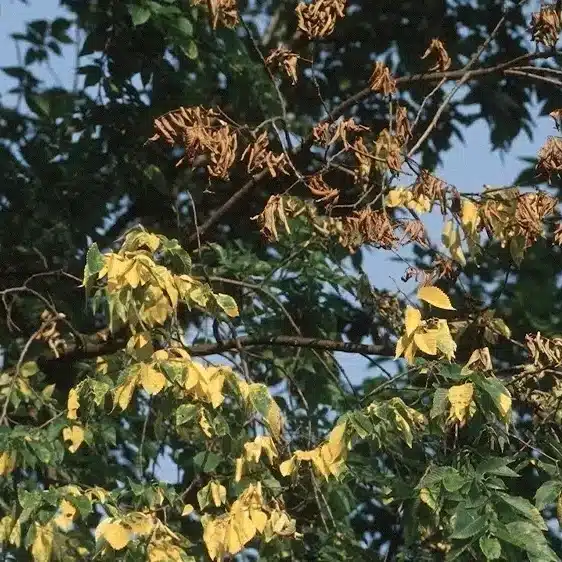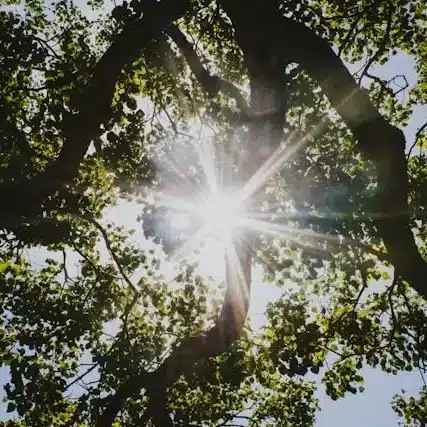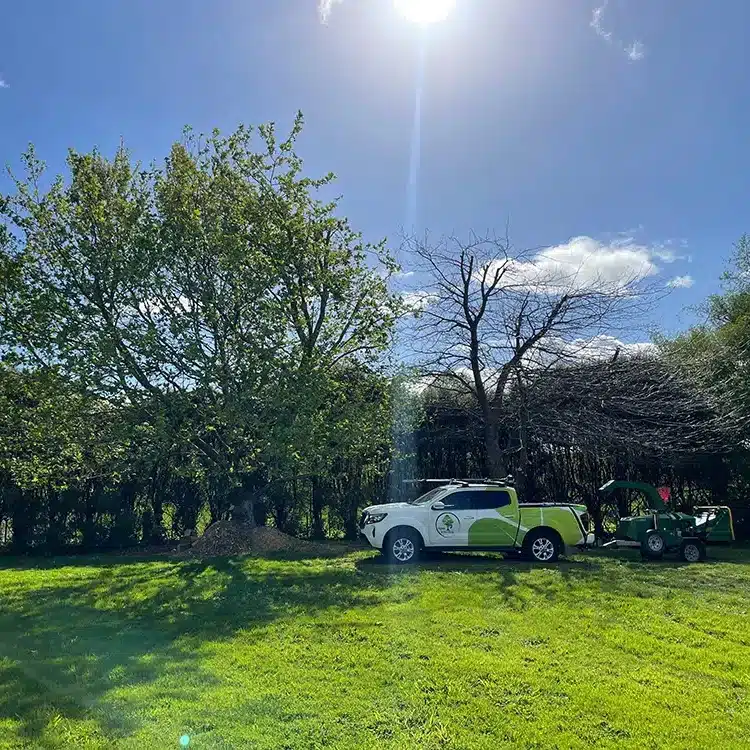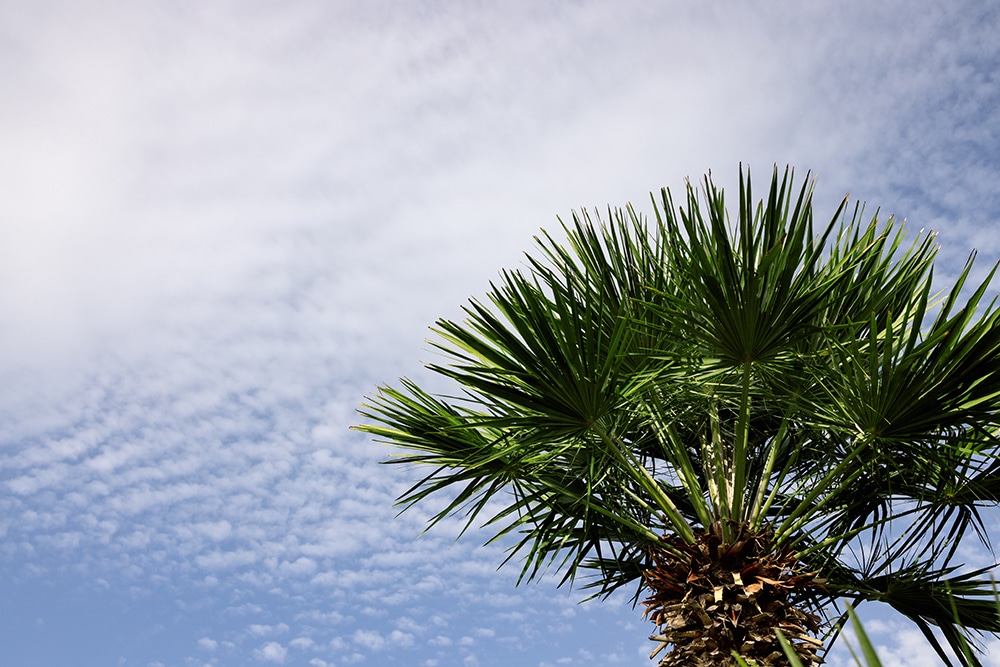
Palm trees, particularly the native Nikau Palm (Rhopalostylis sapida), hold a unique and prestigious position in New Zealand’s rich biodiversity. These towering symbols of resilience and adaptability are integral to the country’s unique landscape and play a significant role in its cultural heritage.
Caring for New Zealand’s palm trees requires specific knowledge and techniques. It is crucial to understand that cutting the top off single-trunked palms can be fatal for these plants. Unlike many other tree species, these palms are monocarpic, meaning they do not regenerate after their main stem is cut. This characteristic makes proper pruning and maintenance essential to ensure their health and longevity.
Unlike other palm trees, the Nikau palm does not tolerate tropical heat but thrives in cooler climates. This unique adaptability sets it apart from typical palm trees, which are generally associated with warmer, tropical climates.
Everything You Need to Know About Palm Trees in New Zealand
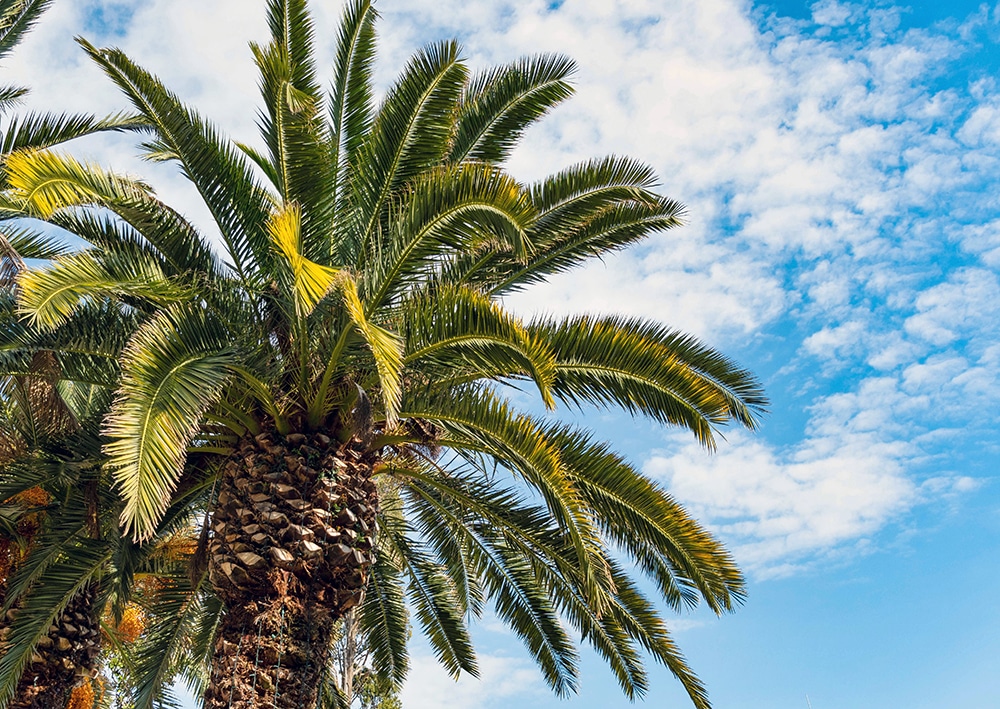
New Zealand, a country known for its diverse and unique flora, is home to various palm trees that add to its rich biodiversity.
Continue reading for our in-depth analysis of palm trees in New Zealand, focusing on their historical significance, economic value, and the essential aspects of how to care for and maintain these beautiful trees.
Historical Significance of Palm Trees in New Zealand
The legacy of palm trees in New Zealand, particularly the Nikau Palm, is deeply intertwined with the country’s history and cultural heritage. Early historical settlers and indigenous communities utilised these palms extensively.
The leaves were used for covering roofs and weaving baskets, while the trunk was used in construction and crafting tools. The berries and heart of the Nikau palm also served as food sources, underscoring the multi-faceted value of this plant.
How to Care for Palm Trees in New Zealand – Expert Arborist Tips
As an arborist specialising in New Zealand’s palm trees, it’s vital to possess a deep understanding of their unique requirements and to apply the right care techniques. Here are some key points to consider for effective palm tree maintenance:
Regular Fertilisation: Palm trees require regular fertilisation to ensure healthy growth and development. A slow-release fertiliser is recommended, which provides a controlled release of nutrients over time. This type of fertiliser should be applied in spring, whether the palms are planted in the ground or potted indoors.
Annual Pruning: Pruning is a vital aspect of palm tree maintenance. It should be carried out once a year to remove old leaves and promote the growth of new ones. However, it’s natural for lower leaves to start browning, and this should not be a cause for concern. The removal of dead or diseased limbs helps keep the tree healthy.
How and When to Prune a Palm Tree in New Zealand?
The proper maintenance of palm trees is essential for their health and aesthetics. Pruning is a key aspect of a healthy palm tree. You should follow appropriate pruning practices to ensure the palm tree’s well-being.
Note: You should never try to prune a palm tree on your own if you don’t have the right skills, equipment, and experience. You should always call a professional arborist in New Zealand to prune palm trees. They have the right equipment and experience to do it for you.
When to Prune a Palm Tree in NZ?
Palm tree pruning should generally be done once a year. However, there isn’t a specific month or time of the year designated for pruning the palm tree. The timing depends largely on the tree’s appearance and needs. When you notice dead, yellowing, or damaged fronds, it’s an indication that pruning is required.
How to Prune a Palm Tree in New Zealand?
When pruning, it is crucial to remove only dead, yellowing, or damaged fronds. Excessive removal of healthy green fronds can cause unnecessary stress to the tree. Flowers or fruit clusters that have finished their cycle should also be removed.
The tops of solitary-trunked palms should never be pruned. These types of palms are monocarpic, meaning they will not regrow like most other trees. Cutting the top off these palms will invariably lead to their death.
Note: You should not cut off the browning palm tree leaves immediately. It’s because the browning leaves may still contain essential nutrients. Wait for the leaves to completely brown before removing them.
When to Plant a Palm Tree in New Zealand?
The optimal time to plant a palm tree in New Zealand is typically during the spring when the soil begins to warm up. Palm trees planted in spring have an entire growing season to establish their roots before facing harsher weather conditions.
What is the Palm Tree Growth Rate in New Zealand?
Palm trees grow slowly, no matter if it’s a small palm tree, a Chinese fan palm that is found in the north island, or a cotton palm that is found on the south island they all have a slow growing rate.
What are the Favorable Conditions to Grow a Palm Tree in New Zealand?
Most palm trees thrive in full sun, although some varieties can tolerate partial shade. Adequate watering during the growing months is crucial, ensuring the palm tree receives enough water and has good drainage.
- Proper Watering: Palm trees flourish best in consistently moist soil. However, overwatering can lead to browning and yellowing of the fronds. In warm locations, weekly watering is usually sufficient.
- Soil Improvement: Palms are generally shallow rooting and do best in well-drained soil that has been enriched with good compost or manure.
- Proper Drainage: Waterlogged or poorly drained soils can lead to a multitude of issues, including root rot and other diseases. When a palm tree’s roots are submerged in water for extended periods, it can suffocate and starve them of vital oxygen, leading to deterioration and potential death of the tree.
Types of Palm Trees in New Zealand and How to Care for Them

Discover the world of palm trees in New Zealand, from the iconic Nikau Palm to the graceful Wedding Palm. Let’s explore the diverse range of palm tree species that thrive in New Zealand’s climate. Here is a list of the main palm tree variations in NZ:
Nikau Palm
The Jelly Palm (Butia capitata), commonly known as the Nikau Palm or the Kiwi Palm, is a fast-growing and attractive palm tree native to New Zealand.
The Nikau Palm reigns as New Zealand’s only native palm species, capturing the essence of the country’s natural heritage. With its slender trunk, symmetrical crown, and vibrant red berries, it symbolises both grace and resilience.
Found in coastal and lowland forests, the Nikau Palm adds a touch of tropical charm, creating a green asset that perfectly blends with the local environment.
Chinese Windmill Palm
The Chinese windmill palm aka Fan Palm also commonly known as the Chusan Palm has the scientific name Trachycarpus fortune. This palm is a testament to exotic beauty and thrives in the diverse landscapes of New Zealand.
With its distinctive hairy trunk and gracefully arranged fan-shaped leaves, it captivates with its unique appearance. Resilient and hardy, this palm species can withstand harsh weather conditions, making it an ideal choice for green asset management in a variety of settings.
Queen Palm
Fit for royalty, the Queen Palm is scientifically known as Syagrus romanzoffiana and reigns as a majestic palm tree species. With its tall stature, graceful arching fronds, and vibrant orange fruit clusters, this tree is known for its elegance and health benefits. Adaptable to various climates, this palm species thrives in New Zealand, offering a magnificent green asset that has stood the test of time.
King Palm
The King Palm, scientifically known as Archontophoenix cunninghamiana, commands attention with its grandeur and magnificence. With its smooth grey trunk, the elegant crown of feathery fronds, and vibrant red fruits, this tree is visually appealing. Adored for its tropical beauty and resilience, this palm species is a popular choice in New Zealand’s green asset management.
Bangalow Palm
New Zealand’s Bangalow Palm is scientifically known as Archontophoenix cunninghamiana and it’s a close relative of the King Palm.
Bangalow palm has a slender trunk, arching fronds, and clusters of bright red fruits and evoke a sense of tropical paradise. Thriving in New Zealand’s favourable climate, this palm species adds a touch of elegance and charm to its surroundings.
Canary Island Date
Scientifically known as Phoenix canariensis, has timeless elegance and sophistication. With its tall trunk and gracefully arching fronds, this palm species creates a captivating focal point. Resilient and hardy, it thrives in New Zealand’s climate, providing a lush green asset that enhances any outdoor space.
Mexican Fan
The Mexican Fan Palm, scientifically known as Washingtonia robusta, graces the New Zealand landscape with its tall and slender form. With its fan-shaped leaves, reaching toward the sky, it brings a touch of architectural beauty to any environment. Known for its resilience and adaptability, this palm species provides a striking green asset that withstands the test of time.
Dwarf Date Palm
The Dwarf Date Palm (Phoenix Roebelenii) also known as the Pygmy Date Palm, may be small in stature but is big in impact. With its delicate fronds and compact size, it adds a touch of elegance to gardens and landscapes. Resilient and easy to care for, this palm species thrives in New Zealand, bringing a miniature green asset that captures attention with its charm.
Sago Palm
The Sago Palm, scientifically known as Cycas revoluta, is enchanted with its unique appearance and ancient lineage. With its sturdy trunk, glossy dark green fronds, and distinctive cone-like structure, it stands as a living fossil. Hardy and versatile, this palm species enhances any setting, offering a captivating green asset that symbolises longevity and resilience.
Cluster Palm
The Cluster Palm, scientifically known as Chamaedorea costaricana, delights with its clustered growth habit and graceful foliage. With its slender stems bearing lush green leaves, it creates a sense of lushness and abundance.
Wedding Palm
The Wedding Palm (Lytocaryum Weddelwam) also known as Kentia Palm is a slow-growing, elegant palm tree that thrives in filtered sunlight. With its thin trunk and beautiful feather-like fronds, it adds a touch of grace and beauty to any indoor or outdoor space in New Zealand.
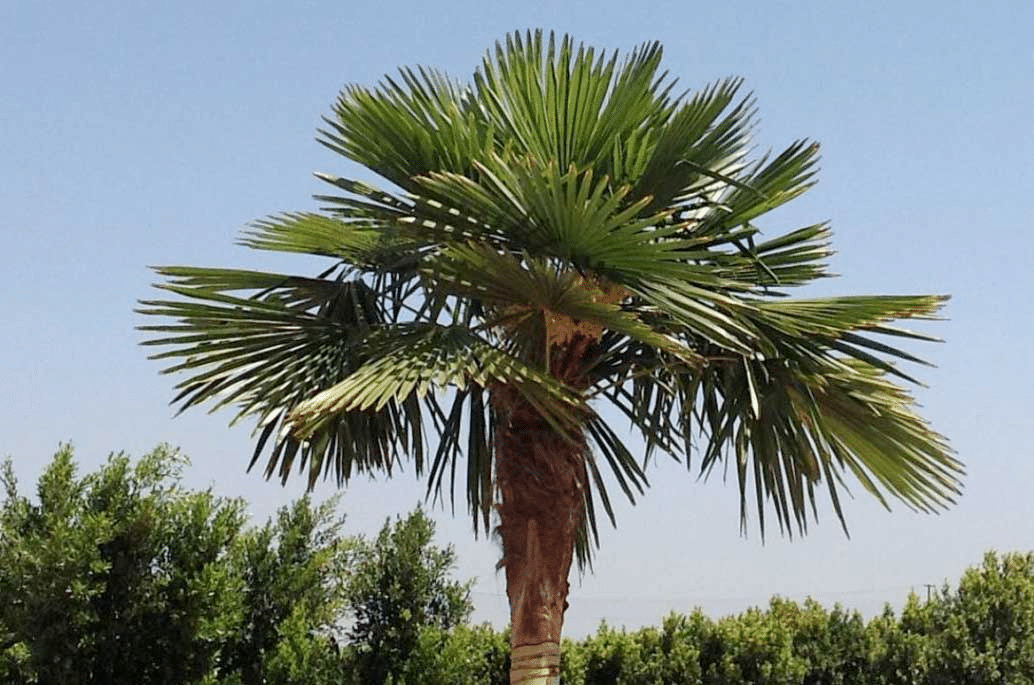
Do you want more information about your Palm Trees?
Need more information or professional care for your palm trees? Look no further than Apex Arborists.
Our team of expert arborists is dedicated to providing expert palm tree care services that are tailored to meet your specific needs.
Whether you’re seeking guidance on proper care techniques or require professional assistance with pruning, fertilisation, or general maintenance, we have the knowledge and experience to ensure your palm trees thrive.
With our informative and professional approach, we deliver clear and concise advice that you can trust. Contact Apex Arborists today and let us be your trusted partner in preserving the beauty and health of your cherished palm trees.


